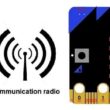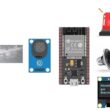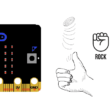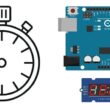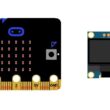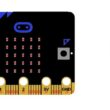Transmit a message to Arduino UNO via Bluetooth
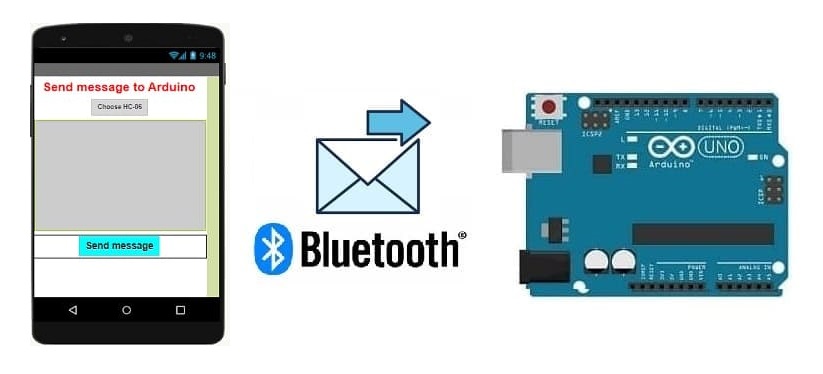
Tutorial plan
1- How to transmit a message from the Smartphone to Arduino UNO via Bluetooth ?
2- The components required to use HC-06 Bluetooth module by Arduino
3- Mounting the Arduino board with HC-06 Bluetooth module
4- Program Arduino UNO to receive a message from the Smartphone
5- Develop a mobile application to send a message to Arduino UNO
How to transmit a message from the Smartphone to Arduino UNO via Bluetooth ?
To transmit a message from a smartphone to an Arduino Uno via Bluetooth, you'll need to follow these general steps:
1- Get the Required Hardware:
Arduino Uno board
HC-06 Bluetooth module
Smartphone with Bluetooth capability
2- Connect HC-06 Bluetooth Module to Arduino:
Connect the TX pin of the Bluetooth module to the RX pin of the Arduino Uno.
Connect the RX pin of the Bluetooth module to the TX pin of the Arduino Uno.
Connect the VCC and GND pins of the Bluetooth module to the 5V and GND pins on the Arduino Uno.
3- Upload Code to Arduino:
Write a simple Arduino sketch to read data from the Serial port.
4- Pair Bluetooth Module with Smartphone:
Enable Bluetooth on your smartphone.
Pair the smartphone with the Bluetooth module.
5- Write a Bluetooth App (on Smartphone):
You can use various platforms to create a simple app for sending data over Bluetooth. For Android, you might use the App Inventor platform.
Use Bluetooth APIs to establish a connection with the paired Bluetooth module and send data.
The components required to use HC-06 Bluetooth module by Arduino
Arduino UNO Board

The Arduino Uno board is a microcontroller board based on the ATmega328P microcontroller. It's one of the most popular and widely used boards in the Arduino family due to its simplicity and versatility.
It is the central control unit for your project.
HC-06 module bluetooth

The HC-06 Bluetooth module is a commonly used serial communication module that enables Bluetooth connectivity for various projects, including Arduino-based systems. It acts as a serial port Bluetooth module, allowing wireless communication between devices.
This module is used for receiving data from smartphone via Bluetooth.
Jumper Wires:

For making temporary connections and wiring between components.
Breadboard:

A breadboard is a useful tool for creating temporary electronic circuits. It allows you to connect components without soldering.
Mounting the Arduino board with HC-06 Bluetooth module
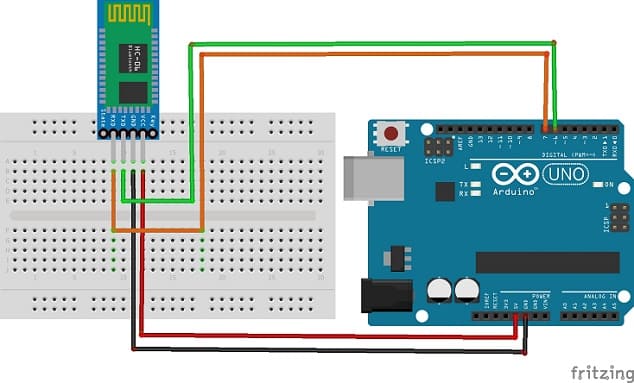
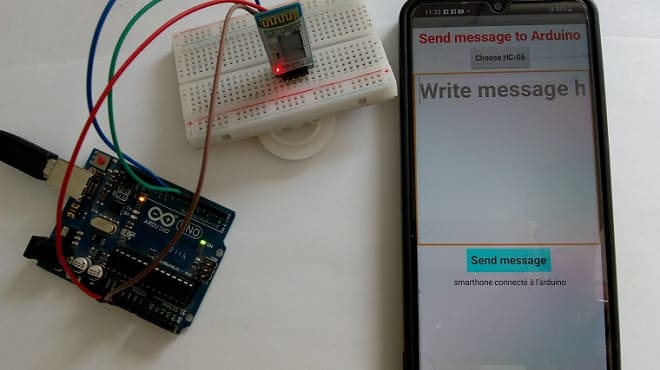
Connect the HC-06 Bluetooth Module to Arduino:
1- VCC pin of HC-06 module to 5V pin of Arduino
2- GND pin of HC-06 module to GND pin of Arduino
3- TXD pin of HC-06 module to pin 6 of Arduino
4- RXD pin of HC-06 to pin 7 of Arduino
Program Arduino UNO to receive a message from the Smartphone
Write a simple Arduino sketch to read data from the Serial port. Here's a basic example using the Serial library :
|
1 2 3 4 5 6 7 8 9 10 11 12 13 14 15 16 17 18 19 20 21 22 23 24 |
#include <SoftwareSerial.h> SoftwareSerial hc06(6,7); String message=""; void setup(){ //Initialize Bluetooth Serial Port hc06.begin(9600); Serial.begin(9600); } void loop(){ //Read data from HC06 while(hc06.available()>0){ message+=(char)hc06.read(); } // if(message!=""){ Serial.print("message received= "); Serial.println(message); message=""; //reset cmd } delay(100); } |
This program allows Arduino UNO to :
- connect to Smartphone
- receive the message from the Smartphone
- display the message in the serial monitor of Arduino IDE
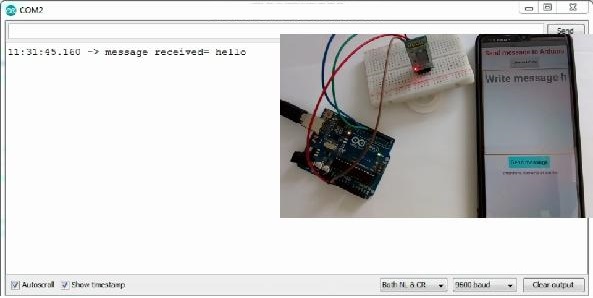
Develop a mobile application to send a message to Arduino UNO
1- Create the designer of mobile app with App Inventor.
- Use the available Bluetooth components to establish a connection with the Arduino.
- Add text fields to write a message.
- Add button to sen the message to Arduino
Here is the Designer part of the application with App Inventor :
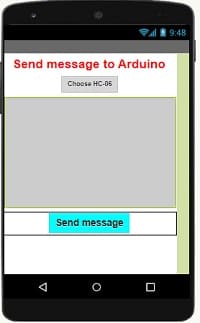
2. Programming the application with App Inventor:
1- Starting with Android 12, Bluetooth permissions have been enhanced to improve security and user data protection. This is why we must declare the authorizations that your application needs in the AndroidManifest.xml file. For Bluetooth, you'll need to include ACCESS_FINE_LOCATION, BLUETOOTH_SCAN, and possibly BLUETOOTH_CONNECT permissions, depending on the features you're using.
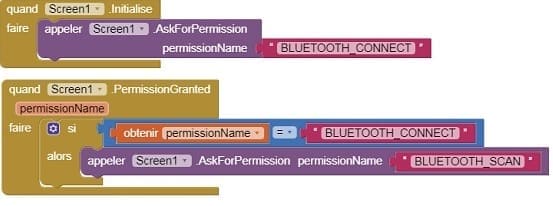
2- Add the the necessary blocks to connect the smartphone to the HC-06 Bluetooth module
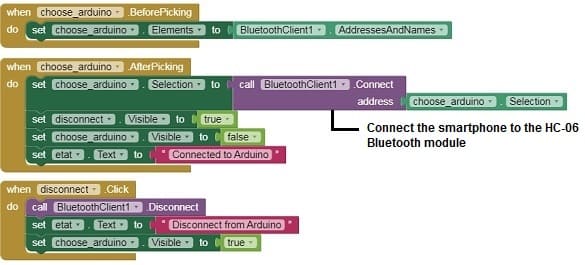
3- Use these programming blocks to send message from Smartphone to Arduino via Bluetooth

Download projectDownload application
Testing :
1- Upload the MicroPython code to Arduino.
2- Install and launch the app created with App Inventor on your smartphone.
3- Connect to Arduino from the mobile app.
4- Check that the message is sent to the Arduino



















